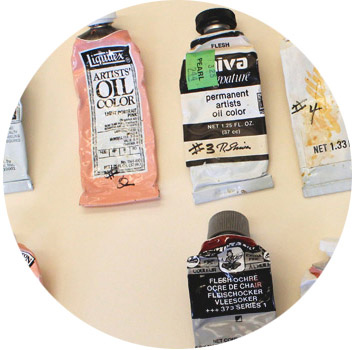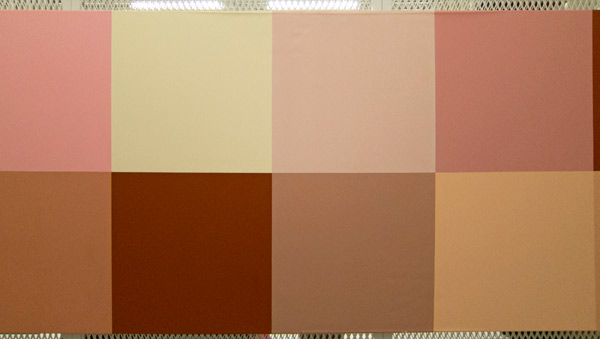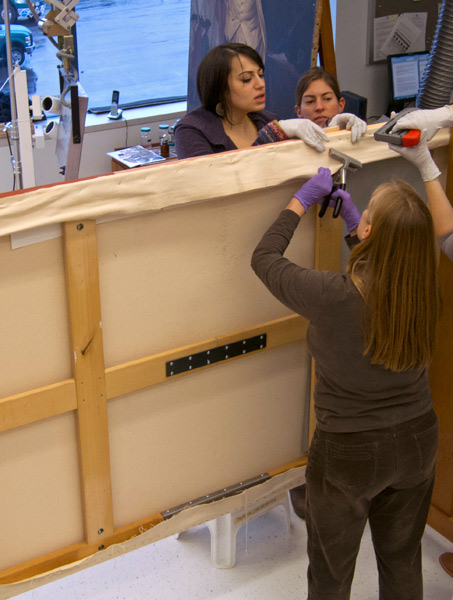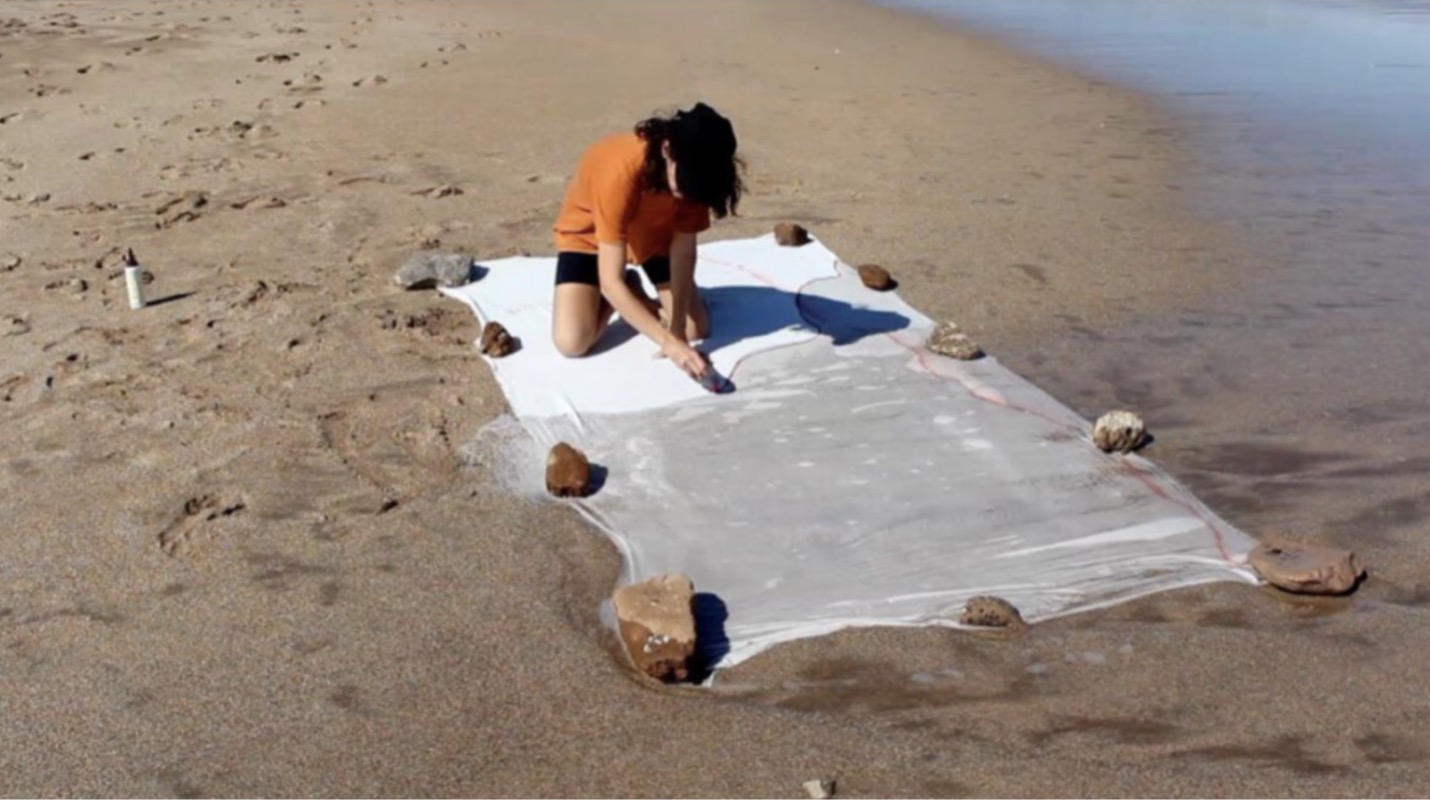While assessing Available Portrait Colors, a work painted in a variety of “flesh-colored” hues, conservators Kate Smith and Teri Hensick from our Straus Center for Conservation and Technical Studies observed that, before entering our collections, the canvas had shrunk and paint was lost and flaking. Though there was work to do, they did have an advantage in their treatment approach: they had in their possession the actual tubes of paint artist Annette Lemieux had used.
After we acquired this painting, our conservators were grateful that Lemieux, who is also Senior Lecturer on Visual and Environmental Studies at Harvard University, brought them the original materials she used for this work and documentation of her process, including a hand-drawn diagram showing where different paints were applied (these items are now preserved in the Straus Center’s materials collection).
With these materials, conservators were able to purchase the exact paints needed for inpainting the work’s losses. They consolidated flaking paint by using a synthetic acrylic emulsion and a small heating spatula. To correct the shrunken canvas, Smith and Hensick worked with Paintings Conservation Fellow Dina Anchin and Project Conservator Allison Jackson to stretch and restretch the painting’s middle area, bringing it flat again around the stretcher bar. In between stretchings, conservators introduced a small amount of moisture with damp blotter paper to elasticize the fabric before pulling it again. The conservation team successfully returned the painting’s edges to where they belong.
The completion of this treatment ensures that people will experience Available Portrait Colors as the artist originally intended. Mary Schneider Enriquez, Houghton Associate Curator of Modern and Contemporary Art, expressed that the Harvard Art Museums “are thrilled to add this work by Annette Lemieux to our collections; it is not only visually engaging, it raises provocative questions regarding race and perception that will encourage viewers to ponder the canvas well after they first see it.”
Take a look at this exciting treatment process in the photos above.






